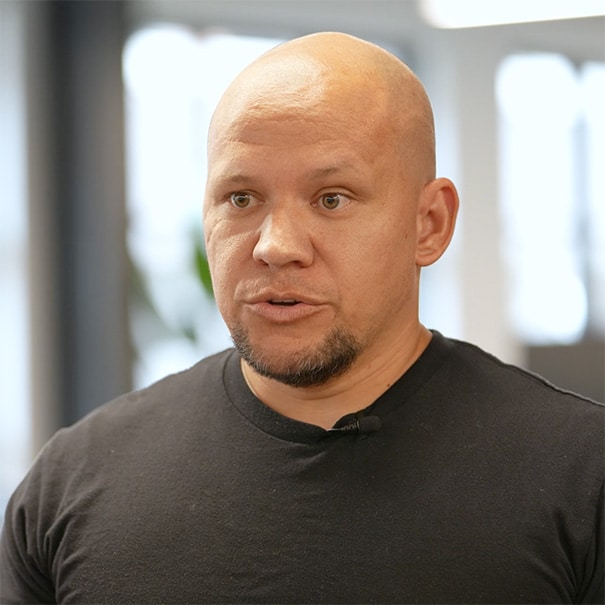Finding Tailwinds to Leverage in Your Business
JOHN GOUGH
Video Transcript
.What I’d like to share with you today is true in any economic environment, but it’s particularly true when you are in a time where resources are limited. So in a recession, for example, where you have less time for marketing, less money to spend on marketing these principles are even more important than they are in the flush times.
So what I’m going to share is a framework with three steps that will help you understand how to get really specific about finding tailwinds in the market and staying strong without as many resources as you typically have. So the framework goes like this.
First, you will look at your product. Evaluate in what way is your product, your service, a strategic advantage to your customers? The reality is that oftentimes we sell things that are helpful or they are a commodity in the market or they’re a luxury in the market. They don’t really add a particular value that is unique to our customer.
And there’s usually a blend or a portfolio of clients that you have that for some of them, the thing you sell is really critically important. And for some of them, it’s just sort of really nice to have finding the right segment, the right audience for whom your product is critically important is going to be necessary when everybody is trying to tighten their belts. So find those right people. Find the thing that makes your product or service particular or unique.
Step two is then you go into your CRM, look at your customer data, and evaluate of all the different people that you sell to, all the people that you have contact with, what are the segments, what are the things that those people share that makes that product unique to them?
So for example, industry is one that’s pretty common. Business size is another one
that’s pretty common. Customer lifecycle. So how often they buy a product from you? Is it sporadic or is it really regular based on how often they need to refresh the thing that they are consuming? And so looking for those segments, those way that those products or those key attributes are aligned is kind of the next thing that you would do to evaluate where you are going to have a particular strength.
Again, within a limited or constrained resource environment. And then finally, what you do is you take that into the market and you start with the people that you know, first your customers, and you say, okay, my understanding is that this product my product, my service is valuable to you in this way. And you start to validate
that with experiments and conversations and with marketing campaigns.
And you do it first there. And when you get that validated, then you can take it to a broader audience. But you do that because you don’t want to blast messages out everywhere, and you don’t want to be trying to figure out who cares about the thing that you’re selling when you don’t have that much money to figure it out.
So being really particular, surgical about getting the right message to the right people at the right time is the most effective way to spend those marketing dollars. So let me give you an example to try and make this a little bit more real. I used to do some work for a fleet upholsterer, a company that would do interiors for trucks and busses. And so they serve three audiences or markets primarily.
They would have small fleets like a local plumber who would have 3 to 5 trucks in their fleet. They would do larger fleets like an enterprise level company like U-Haul, for example. And then they would have local municipalities like busses. A local metro would run busses. And so when you applied the framework, you would say, all right, for whom is that product?
New interiors of your trucks a strategic advantage? Who needs that product? Evaluating those three sets of audiences, you would say, Oh, doesn’t local plumber need that? Not really. They’re the people who ride inside those trucks. They can go another six to 12 to 18 months and have rips and tears in their seats. And it’s not going to materially impact business. U-Haul, on the other hand, their product is their truck.
And so if customers are renting a U-Haul truck and the interior of it is junky and torn up, that’s going to be a negative customer experience. And U-Haul doesn’t want that. So whether they’re resource strapped or not, that’s something that they can’t really afford to give up. Busses maybe kind of in the middle, right. If you’re riding on your local metro and the seats aren’t in great shape, that’s a little bit more tolerable, although over the course of time.
That’s going to be more and more impactful. So somewhere in the middle, we’ve evaluated that. And for whom that product has a strategic advantage. It’s really the enterprise company whose truck is the product, right? So then we’re going to take that into step two, which is evaluating CRM We’re going to look back at our customer
data and say, Who do we sell to already? Where we can say those guys are enterprise versus small fleet versus municipality. We’re going to target our efforts or design campaigns or have conversations first with that particular audience — those enterprise companies.
That takes us right in to step three. We’re ready to go to those companies and those customers and have those conversations. And I really would just start with the conversation. It doesn’t need to be a big blown out marketing campaign at first. It’s call a person who is on the other end of your CRM, right? The customer whose phone number you already have and you say, hey, this is the the landscape that I’m looking at.
This is the problems that I’m seeing in the economic environment. And this is what I think it’s going to mean for my business. What I think it might mean for your business. Is that right? Am I understanding that correctly or are you seeing what I’m seeing? Or is there something else that I don’t see? And hopefully you have those relationships.
And if you don’t now, it’s a great time to develop them where you are having these really engaging conversation and for your customers are developing trust with you because you understand what they need and they’re giving you really important live feedback about what matters in their business right now.
And what will matter in the next 24 months. When you do that, you’re validating the market experience and then you’re ready to go build that campaign or you’re ready to go further those customer relationships, or you’re ready to go into a sales moment where you’re solidifying your marketing activity over that next period of time with where your resources are going to be constrained. And that’s just how the framework comes to life. It doesn’t feel like rocket science. It feels like doing marketing strategically as you are engaging with the people that you already know. So that’s it.
And to bring us back to the framework, it’s look at your product for strategic advantage, look at your CRM for the people you already know, and then go have conversations with those people to build better strategic communication.
Sharing Expertise
What good is learning something if you don't pass it on? You can tap into what we know right now – from dealer programs to determining brand architecture – and you don't have to give us a thing.




